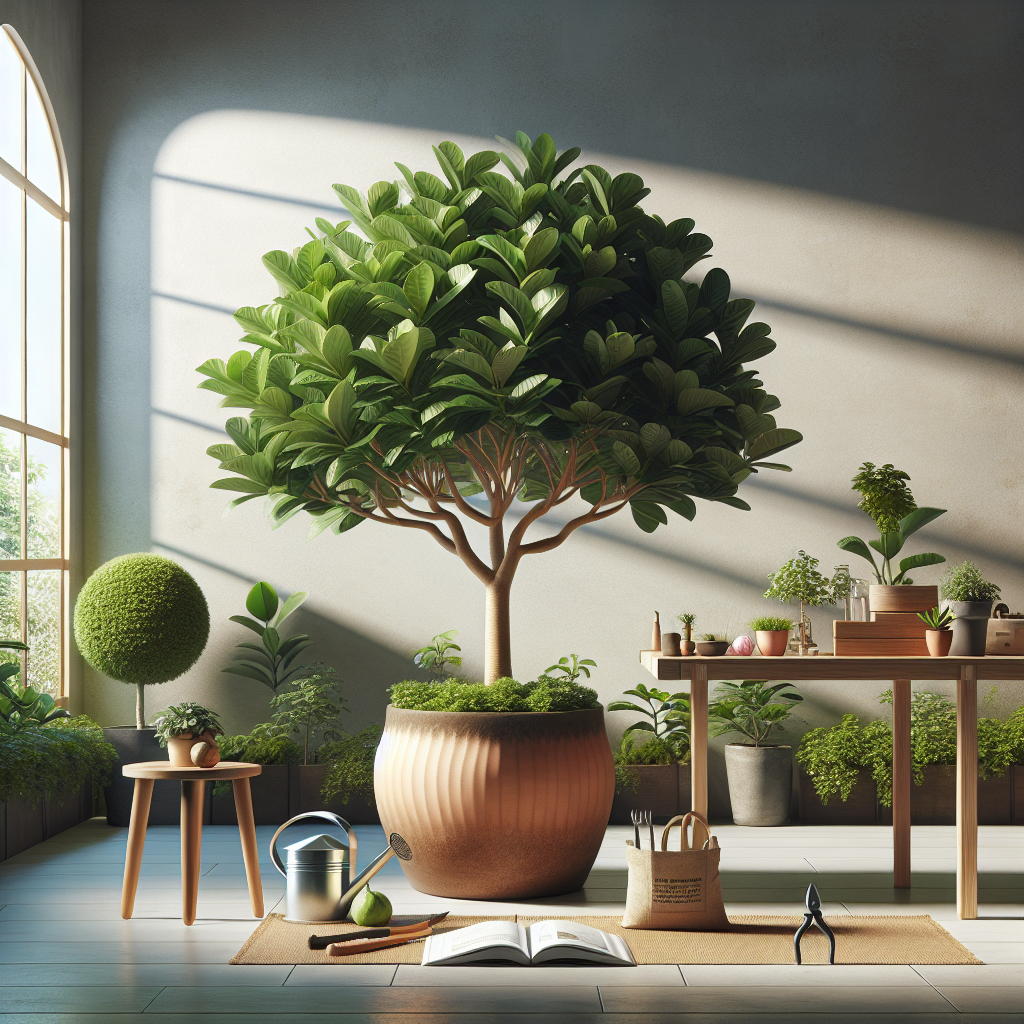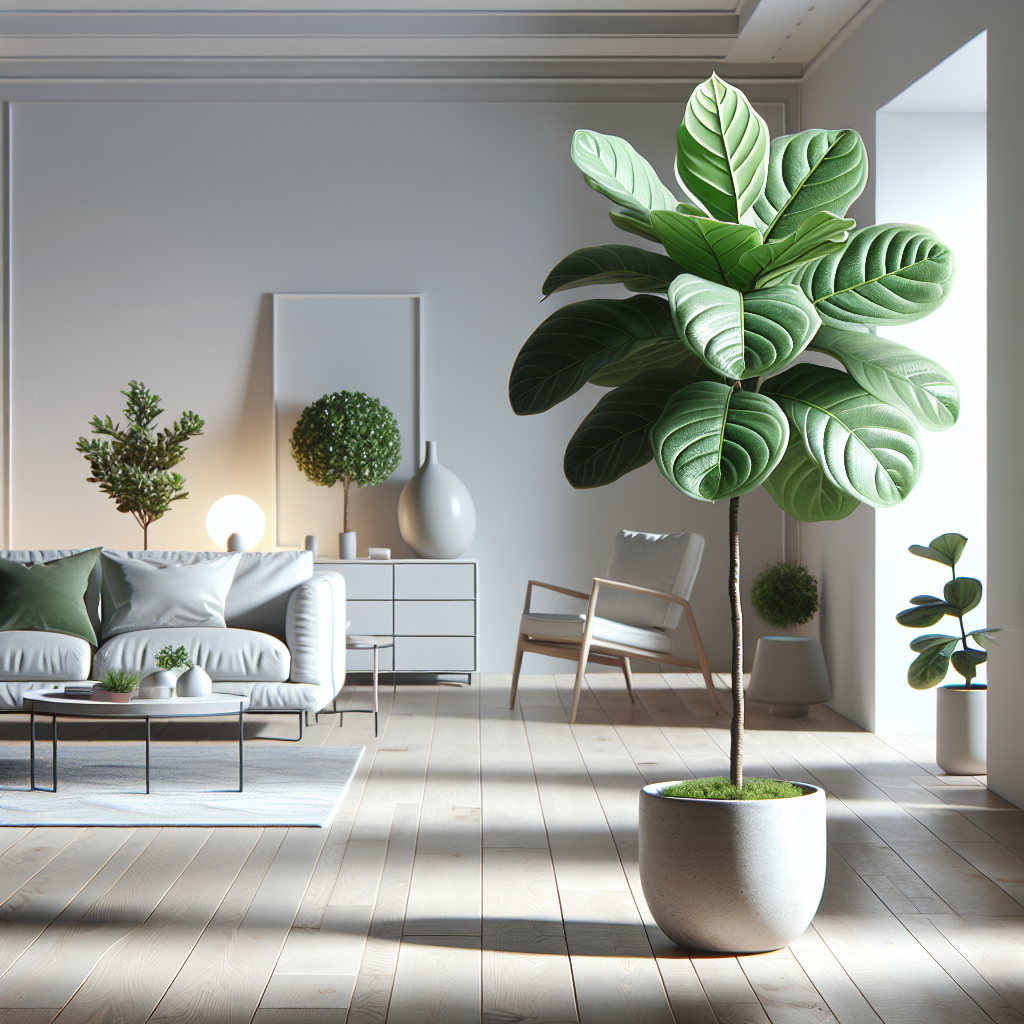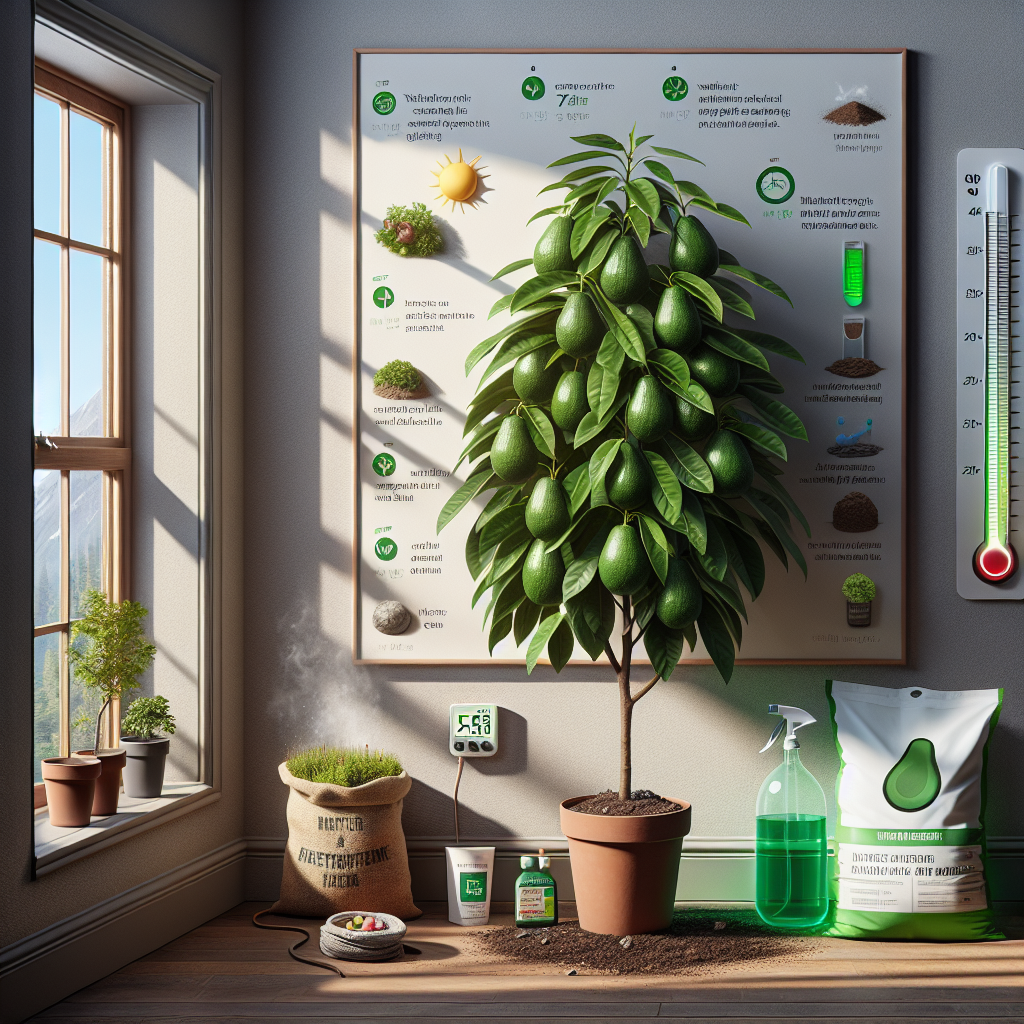How to Cultivate an Indoor Guava Tree for Tropical Flair
Published January 5, 2024 at 8:33 am

Starting Your Indoor Guava Tree Journey
- Pet Friendly: Guava trees are generally considered pet-friendly, so you don't have to worry about your furry friends getting into trouble.
- Light Requirements: These tropical plants love bright, indirect sunlight. Positioning them near a south-facing window is ideal.
- Watering: Regular watering is key, but allowing the topsoil to dry out between waterings is important to prevent root rot.
- Humidity: Guava trees thrive in high humidity. A pebble tray or humidifier can assist in providing the moisture they crave.
- Temperature: Keep your guava tree in temperatures between 65-85°F (18-29°C) for optimal growth.
- Difficulty: Cultivating a guava tree indoors is a moderate gardening challenge but so rewarding with the right care.
Choosing the Right Guava Tree Variety for Your Home
If you're eager to invite a slice of the tropics into your home, the guava tree may just be your perfect match. Not only do these trees offer luscious fruit and aromatic leaves, but they also provide an exotic aesthetic to any space. However, the first step is to select the appropriate variety that will flourish within the confines of indoor gardening.
Several types of guava trees are better suited to indoor growing due to their more compact nature. The 'Tropical White', also known for its sweet, creamy fruits, and the 'Pink Hawaiian', lauded for its gorgeous pink flesh, are among the varieties worth considering. When selecting a tree, a healthy specimen from a reputable nursery, like Logee's, can set you up for success.
Logee's has received rave reviews for their robust selection of tropical plants, including guava trees. Customers have noted the excellent condition of plants upon arrival and their impressive growth when given proper care. People appreciate the detailed care instructions provided, which can be essential for a flourishing indoor guava tree.
Find This and More on Amazon
The Essential Tools for Cultivating an Indoor Guava Tree
Growing an indoor guava tree is no small feat, and having the right tools at hand can make all the difference. Commencing with a sizable pot that can accommodate the tree's growth is crucial. Look for pots with ample drainage holes to prevent water from accumulating at the bottom, which can be detrimental to your tree.
When it comes to potting, FoxFarm Ocean Forest Potting Soil is a recommended choice due to its natural ingredients and excellent drainage. This soil has received positive reviews because it is well-aerated, which helps promote root growth, and it comes enriched with nutrients to give your guava tree a strong start without the immediate need for additional fertilization.
Find This and More on Amazon
Nurturing Your Indoor Guava Tree
After selecting the right variety and preparing with the proper toolkit, it's time to dive into the care essentials for nurturing your guava tree to full splendor within your abode. Consistent watering habits, proper light exposure, and fertility management are pivotal aspects of care that you'll need to master.
One thing that might come up is leaf browning. It's usual for plant parents to be concerned when their greenery starts showing signs of brown leaves. Typically, this can indicate a few potential issues with your guava tree, such as over or under-watering. You Might Be stressing about it, but don't worry too much—monitoring the soil moisture more closely and adjusting your watering schedule usually does the trick.
For fertilizing, consider using a balanced, slow-release fertilizer such as Osmocote Smart-Release Plant Food, apt for indoor fruiting trees. Such fertilizers are liked because they provide a consistent supply of nutrients over several months, reducing the risk of nutrient burn and the need for frequent applications.
Pros
- Continuous nutrient supply
- Minimizes risk of over-fertilization
- Easy to apply
Cons
- More expensive compared to some other fertilizers
- Not organic
Find This and More on Amazon
Dealing with Pests and Diseases
It’s a common story – those new to indoor gardening may find their plants occasionally afflicted by pests or diseases. You might be thinking, “A tropical tree indoors must be pest-free, right?” But that’s not always the case. Guava trees, like many indoor plants, can attract their own set of pesky visitors such as aphids, mealybugs, and spider mites.
One of the go-to solutions for combating these intruders is neem oil, a natural pesticide that’s been praised for its effectiveness and safety. It helps by not only controlling pests but also preventing fungal diseases. Garden Safe’s Neem Oil extract has garnered attention for its ease of use and is often recommended by those who have seen improvements in the health of their plants. It’s said that folks appreciate its organic nature and how it can be used up to the day of harvest for fruiting trees.
Pros
- Natural and safe for use around pets and humans
- Effective against a wide range of indoor plant pests
- Also offers fungal disease prevention
Cons
- May require repeated applications for severe infestations
- The odor can be strong and unpleasant to some people
Find This and More on Amazon
Pruning: The Key to Shaping and Productivity
Pruning isn’t just about aesthetics – it’s important for the health of your indoor guava tree, too. Careful pruning can help in shaping the tree, encouraging better air circulation, and can even lead to more fruitful yields. It might be daunting at first, especially with a fruit-bearing plant, but a little research and patience can lead to pruning like a pro.
For this delicate task, a pair of Fiskars Pruning Shears is a popular tool among green thumbs. They’re celebrated for their durability and precision, which is exactly what you need when it’s time to trim your guava tree. It’s often said that these shears fit comfortably in the hand and make clean cuts, which is crucial for the plant’s recovery and continued growth.
Pros
- Comfortable grip
- Precise and clean cuts
- Durable and long-lasting
Cons
- May need regular sharpening to maintain effectiveness
- Not suitable for very thick branches
Find This and More on Amazon
Repotting: Timing and Techniques
Your indoor guava has been doing well, but you notice that it’s starting to outgrow its pot. Wondering when and how to repot? It’s simple – if you observe roots creeping out of the drainage holes or if the growth seems to have slowed, it’s likely time for a change. Typically, repotting is best done in the spring, when the plant is entering a period of active growth.
Choosing a new pot that is only a few inches wider than the current one is a wise move, as too large a pot can lead to waterlogging and root rot. Speaking of pots, the Bloem Saturn Planter comes highly recommended for indoor use. Its modern design is often mentioned in reviews as a stylish addition to any room, and its built-in saucer helps prevent water from spilling onto your floors.
As for soil, you might already have your FoxFarm Ocean Forest Potting Soil from earlier, but if you need more, remember it’s excellent for repotting due to its nutrient-rich composition and good drainage.
Find This and More on Amazon
Maximizing Fruit Production
So, you’ve got the guava tree pruned, potted, and pretty, but how do you make sure you actually get to the best part – the fruit? First and foremost, patience is key. It may take a few years for a new indoor guava tree to begin fruiting, but with optimal conditions, you’ll get there.
Ensuring that your tree gets enough light is crucial. If you can’t provide natural sunlight, grow lights can be an effective alternative. The Roleadro LED Grow Light is one that’s often discussed among indoor plant enthusiasts. These lights are lauded for their broad spectrum capabilities, which means they can support your guava tree through all its growth stages – from leaf to fruit.
When the tree begins to fruit, supporting its branches may become necessary. Soft plant ties, like those from VELCRO Brand, can help support heavy branches laden with fruit without damaging them. The convenience and reusability of these ties are frequently mentioned in reviews as a major plus.
Pros
- Encourages year-round growth with artificial sunlight
- Energy-efficient and long-lasting
- Adjustable intensity suitable for all stages of growth
Cons
- It may be a considerable initial investment
- The light spectrum needs to be carefully researched to suit the guava tree’s needs
Find This and More on Amazon
Understanding Guava Tree Pollination Indoors
Now that you are equipped with tools for maximum fruit production, there’s another dimension to consider – pollination. Guava trees can be either self-pollinating or may require cross-pollination to bear fruit. Knowing which type you have is essential, particularly when growing indoors where natural pollinators like bees aren’t present.
For self-pollinating varieties, the process can be as straightforward as giving your tree a little shake to help distribute the pollen. On the other hand, cross-pollinating varieties may require you to play the role of the bee. Using a small paintbrush, you can gently transfer pollen from the male part of the flower, the stamen, to the female part, the pistil. This intimate knowledge of your plant’s needs can greatly increase your success rate with fruit bearing.
Winter Care for Your Indoor Guava Tree
Winters can be a troubling time for tropical plants, but don’t let the cold months dampen your spirits or harm your guava tree. Indoor heating systems can create dry air, which may not be ideal for tropical plants. A humidifier or regular misting can help maintain the humidity levels your guava tree yearns for.
Moreover, the reduced daylight during winter could impair the growth of your tree. Augmenting natural light with grow lights, like the previously mentioned Roleadro LED Grow Light, can aid your tree in photosynthesis and keep it thriving. Remember not to place your guava tree near drafty windows or doors where cold drafts could stress the plant.
Harvesting and Enjoying Your Indoor Guava Tree’s Fruit
One of the most gratifying aspects of growing an indoor guava tree is the moment you get to harvest the fruits of your labor – quite literally. When your guava fruits begin to change color and yield slightly under pressure, they’re likely ready to be picked.
Enjoy your fresh guavas in smoothies, jams, or simply raw to savor the tropical flavors. Sharing your harvest with friends can also be a delightful way to connect and share the joys of indoor gardening. Celebrate these moments, as they mark the culmination of your dedication and care.
Challenges and Rewards of Indoor Guava Tree Care
As you venture through the phases of indoor guava tree cultivation, from potting to fruiting, remember that challenges are to be expected. Observing and adjusting to your tree’s needs will become second nature, and each small victory becomes a learning experience.
Taking on the moderate challenge of growing a guava tree inside is not just about the fruits, but the entire process. It’s about the satisfaction of nurturing a living piece from seedling to full splendor, offering both lush foliage and delicious rewards.
Your indoor guava tree will not only add tropical flair to your living space but also a sense of achievement to your indoor gardening pursuits. So, roll up your sleeves, give that guava tree the love it deserves, and watch as it transforms your home into a mini tropical oasis.
Shop more on Amazon

